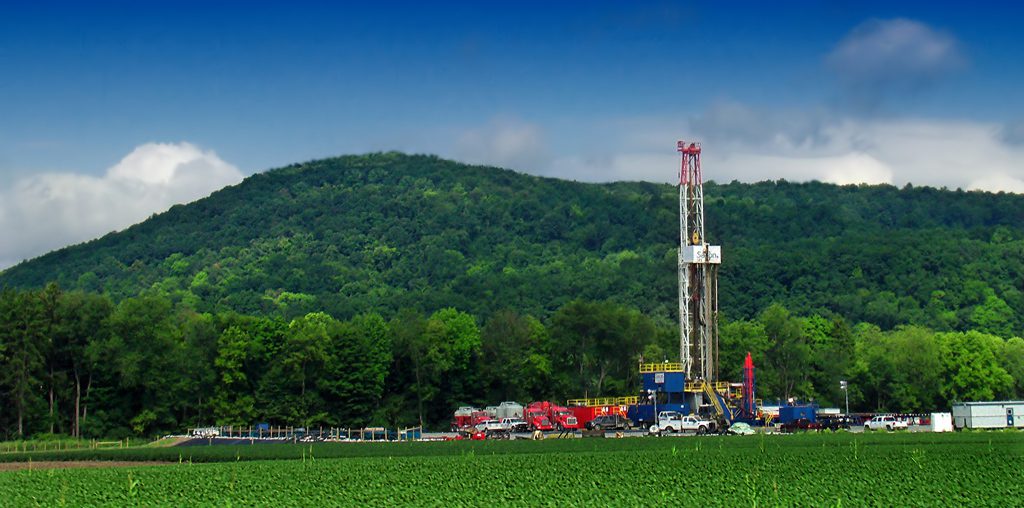A new geological study has identified options for storing natural liquids underground in the northern Appalachian Basin, providing further evidence of the region’s potential to support a petrochemical-manufacturing corridor that economic development groups and the governors Pennsylvania, Ohio and West Virginia hope to attract.
Meanwhile, Shell Appalachia has agreed to include fence-line monitoring to better detect fugitive emissions at its ethane “cracker” complex under construction in Beaver County, adding another layer of surveillance that had been sought by environmental nonprofits concerned about the release air toxics and other harmful pollutants.
Economic development groups view the ethane cracker complex, which will produce feedstock for plastics manufacturing, as a catalyst for growing a petrochemical-manufacturing corridor in a tri-state region where the Marcellus shale formation reigns as the second-largest unconventional gas field in the world.
Gas storage hub
The Marcellus shale play is rich in natural gas liquids, including ethane, which is considered one of its greatest untapped resources. Part of the strategy for growing a petrochemical corridor and stimulating a more robust local market for shale gas is to develop a regional hub for the storage and trading of natural gas liquids.
West Virginia University researchers have concluded the region has the geological structures that can accommodate such a storage hub.
They’ve indentified several options in the region suitable for long-term underground storage of natural gas liquids, including salt caverns along the Ohio River, limestone formations, more than 100 depleted gas wells and a dozen inactive natural gas storage fields, according to a recent report.
“Having natural gas liquids storage capacity in the greater region is critical to fully realizing the potential of the shale gas resources found in our three states,” said David Ruppersberger, president of the Pittsburgh Regional Alliance, the economic development marketing affiliate of the Allegheny Conference. “Shell’s decision to build a world-scale petrochemical facility here is game-changing and shines a spotlight on fresh opportunities in this part of the country. Natural gas storage will do the same – positioning us to attract additional ethane crackers and other petrochemical investments, as well as supporting further upstream and midstream development,”
The Shell cracker complex is a high-profile example of the jobs and investment state officials hope to generate by more aggressively exploiting the region’s abundance of shale gas. The plant is expected to create some 10,000 temporary construction jobs and employ 600 fulltime workers when operating.
Pollution watch
While such possibilities brighten the economic prospects of the region, air quality modeling and other evidence suggest emissions from petrochemical facilities, such as ethane crackers, are not benign.
On one hand, the Shell ethane cracker is expected to emit lower volumes of widespread “criteria” air pollutants, such as fine particulates, than the zinc smelter that previous occupied the Potter Township, Beaver County site. The risk of criteria pollutants can extend hundreds of miles.
But the cracker is expected to emit higher concentrations of several hazardous air pollutants, which include compounds known or suspected to cause cancer, such as benzene. Health risks associated with hazardous air pollutants tend to be greatest in communities closest to the source.
Under state law, Shell is largely responsible for monitoring plant emissions and recording the data that will show how effectively the plant’s air quality controls are managing pollution. The plant’s operating permit approved by the state Department of Environmental Protection only requires monitoring within the plant.
However, Shell recently agreed to expand its monitoring to areas along the plant’s fence line as part of a settlement of a lawsuit challenging aspects of the plant’s operating permit brought by the Philadelphia-based Clean Air Council and the Environmental Integrity Project, a national environmental watchdog group. The nonprofits argued that the permit DEP granted did not go far enough to adequately monitor emissions-related public health risks.
“Fence-line monitoring protects both workers and the community. People should know what is coming directly into the community,” said Joseph Minott, the Clean Air Council’s executive director and chief council.
A Clean Air Council survey of Beaver County residents shows that while 54 percent support the new ethane cracker complex, 56 percent are concerned about its environmental impact.





